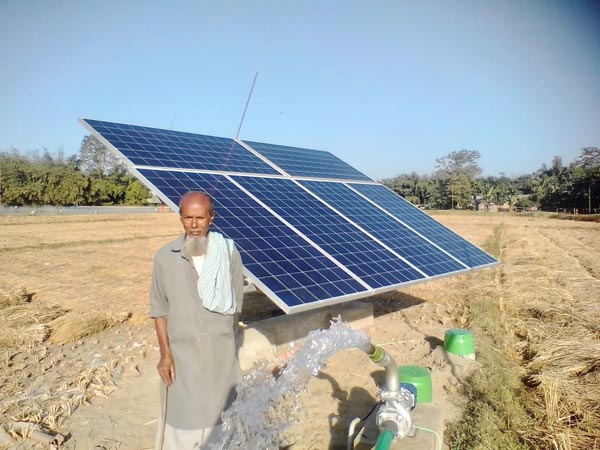India’s mission to deploy some two million off-grid solar-powered irrigation pumps by 2022 has made sluggish progress, with only one-eighth of the target achieved so far, according to a new report from the Institute for Energy Economics and Financial Analysis (IEEFA).
“Solar-powered irrigation is a huge opportunity for India,” said author Kashish Shah, IEEFA Research Analyst. “But despite the clear multiple commercial benefits, the rollout of solar pumps has been much slower than anticipated.”
The report calls for a renewed push on the installation of solar-powered pumps under the Ministry of New and Renewable Energy’s INR34,422 crore (US$4.7 billion) PM-KUSUM scheme, which has a 2022 target of 30.8 GW of solar capacity (revised from 25.75 GW earlier), including about two million off-grid pumps.
According to the MNRE data, against the ambitious target of installing two million off-grid solar pumps, only 246,000 pumps were installed by the end of FY2019-20. The PM-KUSUM scheme should have accelerated the process of pump deployment, however, the report noted only 8,900 pumps were deployed in the 12 months after the formalization of the scheme.
By comparison, the number of fossil-fuel-powered water pumps in India totals more than 8.8 million.
Benefits
Compared to utility-scale solar, distributed PV generation reduces the need to expand transmission capacity and doesn’t require large land areas.
Shah said increasing distributed solar capacity through the installation of solar pumps would support India’s near-term renewable energy target of 175GW by 2022, including 100GW of solar capacity.
Further, “replacing fleets of diesel generators in the agricultural sector would reduce emissions and air pollution and contribute to the government’s efforts to promote a self-reliant India by reducing reliance on costly, subsidized diesel imports.”
“Solar pumps would also reduce the burden on distribution companies (discoms) of providing highly subsidized power to the agricultural sector. This could potentially even lead to reductions in tariffs for commercial and industrial consumers who cross-subsidize electricity for agriculture,” Shah added.
Bottlenecks
The report cites lack of coordination among state-level bodies, affordability, asset ownership, and technology as key challenges impeding India’s uptake of solar pumps. It notes information asymmetry across state discoms, agricultural department, minor irrigation department and other State-designated departments in the scheme implementation.
Investing in the upfront cost of the pump and accessing formal bank credit remains a challenge for small and marginal farmers despite the central and state governments providing financial assistance for 30% of the cost.
The report stated different models of asset ownership – farmer, discom, or developer – could play a significant role in the resulting viability of the pump sets.
“When it comes to implementing the scheme by the states, it’s a case of one size does not fit all,” says Shah.
“Different models of pump ownership could work for different states or even different districts, depending on the dynamics of the agricultural and power sectors in that area.
“Each state needs to zero in on which mode of solarising its agricultural power demand – off-grid or on-grid – works best for them.”
The report looks at the progress of solar pump deployment in three states; Gujarat, Maharashtra and Andhra Pradesh, and notes the ambitious approach taken by Andhra Pradesh to solarise the state’s entire agricultural demand through distributed solar, as well as using the enormous cost advantages of centralised utility-scale solar as an alternative.
This content is protected by copyright and may not be reused. If you want to cooperate with us and would like to reuse some of our content, please contact: editors@pv-magazine.com.









2 comments
By submitting this form you agree to pv magazine using your data for the purposes of publishing your comment.
Your personal data will only be disclosed or otherwise transmitted to third parties for the purposes of spam filtering or if this is necessary for technical maintenance of the website. Any other transfer to third parties will not take place unless this is justified on the basis of applicable data protection regulations or if pv magazine is legally obliged to do so.
You may revoke this consent at any time with effect for the future, in which case your personal data will be deleted immediately. Otherwise, your data will be deleted if pv magazine has processed your request or the purpose of data storage is fulfilled.
Further information on data privacy can be found in our Data Protection Policy.